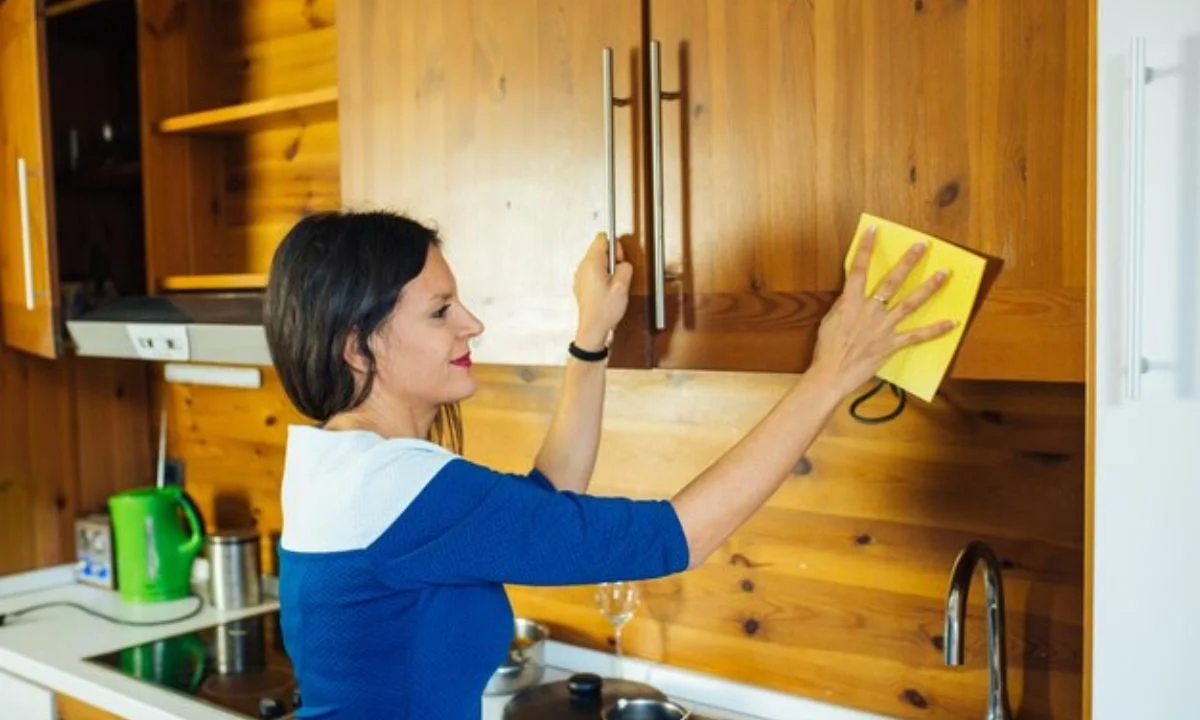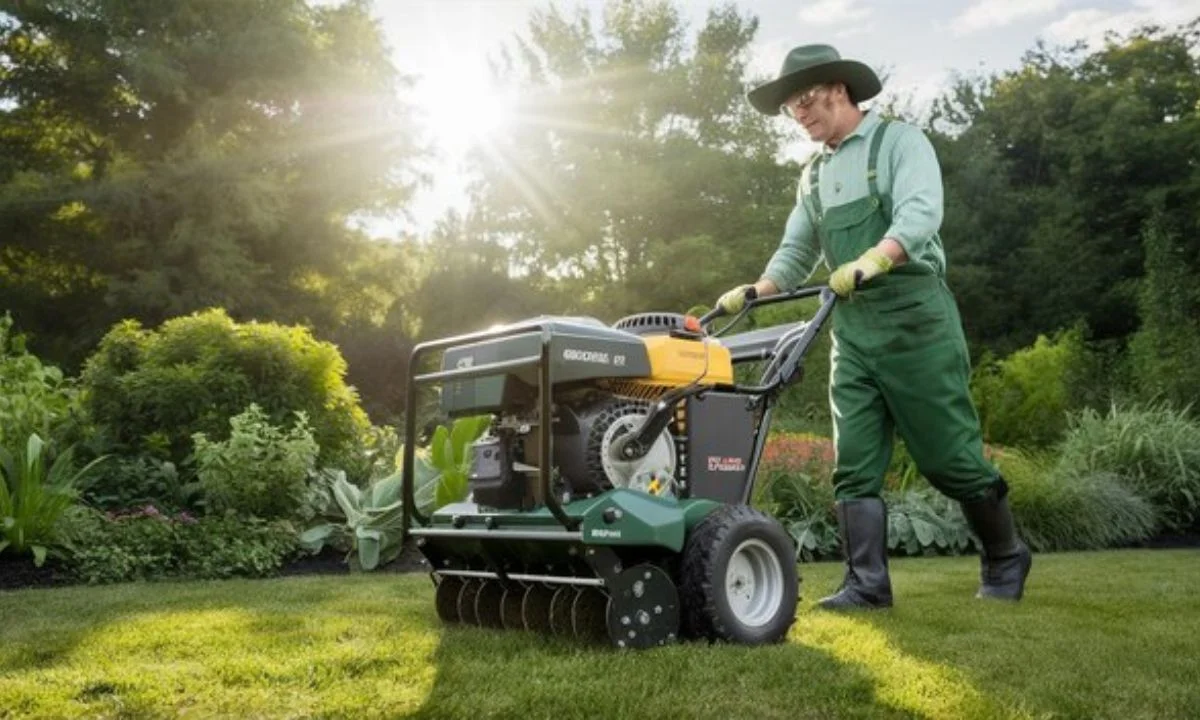Knowing how to clean kitchen cabinets is important for maintaining a fresh, clean, and organized kitchen. Over time, grease, food splatters, dust, and grime can build up on cabinet surfaces, making them look dirty and dull. Regular cleaning not only keeps your kitchen looking great but also extends the lifespan of your cabinets. In this guide, we will walk you through step-by-step methods for cleaning different types of kitchen cabinets, ensuring they remain spotless and fresh for years to come.
Why It’s Important to Clean Your Kitchen Cabinets Regularly
Kitchen cabinets are often exposed to grease, food particles, and fingerprints. Without regular cleaning, this buildup can cause your cabinets to look worn out and may even damage the material over time. Routine cleaning helps prevent this and keeps your kitchen looking fresh. Additionally, a clean kitchen is a healthier kitchen, free from dust and food residue.
Materials You’ll Need to Clean Your Kitchen Cabinets
Before diving into how to clean your kitchen cabinets, it’s important to gather the right materials. Here’s a list of what you will need:
- Soft microfiber cloths or sponges
- Dish soap
- Baking soda
- Vinegar
- Warm water
- Soft-bristle brush (for detailed areas)
- Dry towels
Step-by-Step Guide on How to Clean Kitchen Cabinets
Daily Maintenance of Kitchen Cabinets
For everyday cleaning, use a soft cloth and a mild dish soap solution.
- Step 1: Fill a small bucket with warm water and add a few drops of dish soap.
- Step 2: Dip the cloth in the soapy water, wring it out, and wipe down the cabinet surfaces.
- Step 3: Focus on handles and edges where fingerprints tend to gather.
- Step 4: Dry the cabinets immediately with a dry towel to prevent water damage.
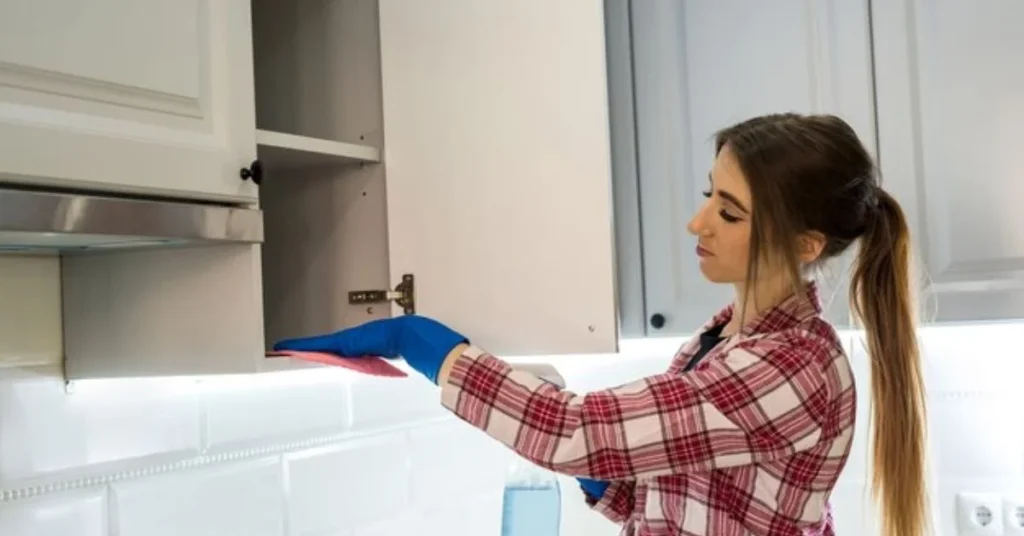
Deep Cleaning Your Cabinets (Weekly or Bi-Weekly)
For a deeper clean, especially for cabinets exposed to heavy grease, a stronger solution may be needed.
- Step 1: Mix 1 cup of vinegar with 1 cup of warm water in a spray bottle.
- Step 2: Spray the solution onto the cabinet surfaces, avoiding soaking the wood.
- Step 3: Wipe away the dirt and grime with a soft cloth.
- Step 4: For stubborn grease spots, make a paste with baking soda and water, apply it to the spot, and scrub gently with a soft-bristle brush.
This method works well for removing grease buildup while being gentle on the cabinet material.
How to Clean Wood Kitchen Cabinets
Wood cabinets require special care to maintain their natural finish.
- Step 1: Use a soft cloth with a mixture of warm water and mild dish soap.
- Step 2: Wipe down the cabinet surfaces, following the grain of the wood.
- Step 3: Avoid using harsh chemicals that can strip the wood’s finish.
- Step 4: After cleaning, apply a wood polish or oil to keep the cabinets looking fresh and to protect the wood from drying out.
How to Clean Kitchen Cabinets Laminate
Laminate cabinets are more resistant to stains and scratches but still need regular care.
- Step 1: Use a non-abrasive sponge or cloth with warm water and dish soap.
- Step 2: Gently wipe the laminate surfaces, paying special attention to sticky spots.
- Step 3: Rinse the cloth with clean water and wipe down the cabinets again to remove any soap residue.
- Step 4: Dry the cabinets with a towel to prevent water spots.
Tips for Maintaining Clean Kitchen Cabinets
Avoid Using Harsh Chemicals
Stay away from abrasive cleaners or tools like steel wool that can scratch or damage cabinet surfaces. Stick to mild cleaners or natural solutions like vinegar and baking soda.
Wipe Spills Immediately
To prevent stains and sticky buildup, wipe away spills as soon as they happen. This is especially important for cabinets near the stove, where grease splatters can accumulate.
Use Shelf Liners
Lining the inside of your cabinets with shelf liners can help protect the interior from spills and stains. They can easily be removed and cleaned when needed.
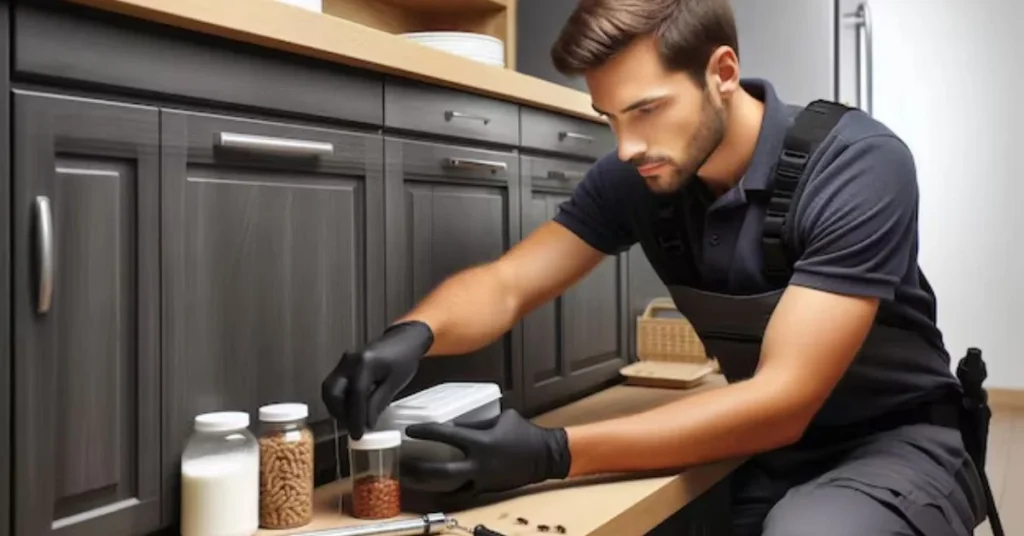
Keep Cabinet Handles Clean
Cabinet handles are often touched with dirty or greasy hands. Regularly clean handles with soapy water and dry them thoroughly to prevent grime from building up.
Don’t Forget the Tops of Cabinets
If your cabinets don’t reach the ceiling, the tops can accumulate dust and grease. Wipe them down occasionally or use shelf liners to make cleaning easier.
How to Clean Kitchen Cabinets Hardware
Your cabinet handles, knobs, and hinges also need cleaning to stay in top condition. Here’s how to clean them effectively:
- Step 1: Remove the hardware from the cabinets if possible.
- Step 2: Soak the hardware in warm, soapy water for 10-15 minutes to loosen any dirt or grease.
- Step 3: Use a soft-bristle brush to scrub away any remaining grime.
- Step 4: Dry the hardware thoroughly before reattaching it to the cabinets.
Cleaning Different Types of Cabinet Materials
Painted Cabinets
For How to Clean Kitchen Cabinets, Painted cabinets can be cleaned with warm water and mild dish soap. Avoid scrubbing too hard, as this can damage the paint. Rinse with clean water and dry thoroughly.
Stainless Steel Cabinets
Stainless steel cabinets are durable but can show fingerprints and smudges easily. Use a stainless steel cleaner or a mixture of water and vinegar to keep them shiny.
Glass-Front Cabinets
Glass-front cabinets require a glass cleaner or a solution of vinegar and water to keep them streak-free. Wipe with a lint-free cloth to avoid leaving streaks behind.
Conclusion
Knowing how to clean kitchen cabinets can make a big difference in maintaining the cleanliness and appearance of your kitchen. With regular cleaning and the right products, you can prevent grease and grime from building up and keep your cabinets looking fresh and new for years. Whether your cabinets are made of wood, laminate, or stainless steel, using the right cleaning methods will help preserve their beauty and functionality. A little routine maintenance goes a long way in ensuring your kitchen remains a pleasant space to cook and enjoy. Visit here for more information.
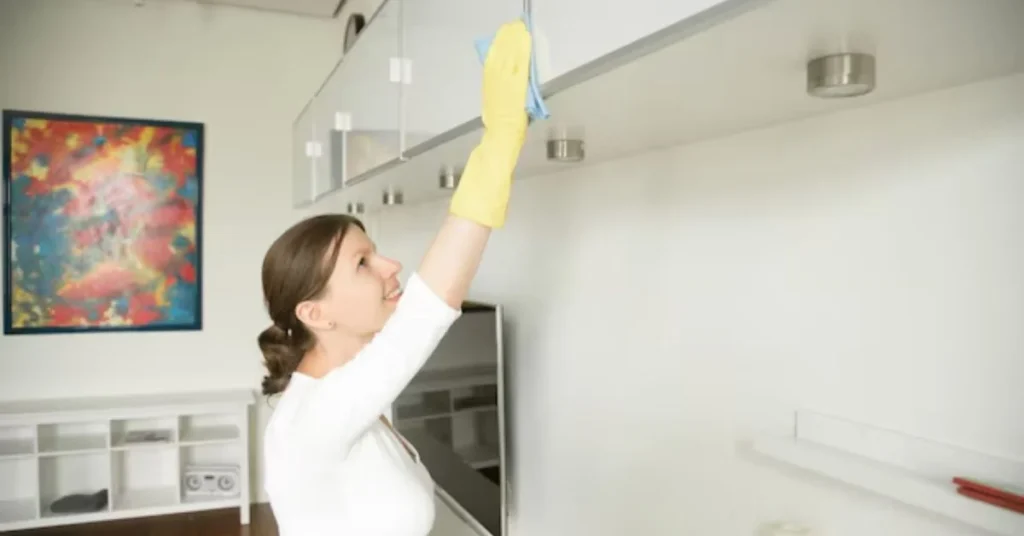
How often should I clean my kitchen cabinets?
It’s a good idea to clean your kitchen cabinets at least once a week to remove dust, grease, and grime. For deeper cleaning, aim for once every couple of weeks.
Can I use vinegar on wood kitchen cabinets?
Yes, vinegar mixed with water can be used to clean wood cabinets. However, be sure not to soak the wood, as too much moisture can cause damage.
What’s the best way to clean greasy kitchen cabinets?
A mixture of dish soap and warm water works well for grease. For tougher grease, try using baking soda or a vinegar solution.
Should I polish my kitchen cabinets?
Polishing wood cabinets once or twice a year with a wood polish or oil can help keep them shiny and prevent drying or cracking.
Can I use bleach to clean my kitchen cabinets?
It’s best to avoid using bleach on kitchen cabinets, as it can damage the finish and cause discoloration. Stick to milder cleaning agents like dish soap and water.

